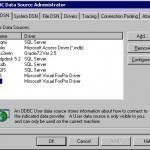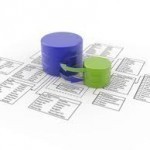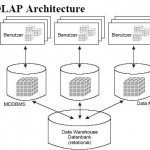One of the technology terms that most people have become accustomed to hearing either at work or while surfing the Internet is the database. The database used to be an extremely technical term, however with the rise of computer systems and information technology throughout our culture, the database has become a household term. A database is a structured collection of records or data that is stored in a computer system. In order for a database to be truly functional, it must not only store large amounts of records well, but Read More
Java Databases
hsqldb HSQLDB is the leading SQL relational database engine written in Java. HSQLDB has a JDBC driver and supports a rich subset of ANSI-92 SQL (BNF tree format) plus SQL 99 and 2003 enhancements. HSQLDB offers a small (less than 100k in one version), fast database engine which offers both in-memory and disk-based tables. Embedded and server modes are available. Additionally, it includes tools such as a minimal web server, in-memory query and management tools (can be run as applets) and a number of demonstration examples. The product is currently Read More
Multimedia Database
A multimedia database is a database that hosts one or more primary media file types such as .txt (documents), .jpg (images), .swf (videos), .mp3 (audio), etc. And loosely fall into three main categories: Static media (time-independent, i.e. images and handwriting) Dynamic media (time-dependent, i.e. video and sound bytes) Dimensional media (i.e. 3D games or computer-aided drafting programs- CAD) All primary media files are stored in binary strings of zeros and ones, and are encoded according to file type. The term "data" is typically referenced from the computer point of view, Read More
SQL (Structured Query Language)
SQL (Structured Query Language) is the most common standardized database language used to create, retrieve, access, modify, controland manage relational databases. SQL is a querying language exclusively designed for controlling data and managing databases effectively. SQL was originally developed by IBM (International Business Machines Corporation) in the 1970's for their DB2 RDBMS. The team of developers included Andrew Richardson, Donald C. Messerly and Raymond F. Boyce. This first version was initially known as SEQUEL. It was basically used to modify and query the data stored in IBM's relational database product Read More
OLAP Cube
When a company or organization wants to combine all of their information and resources into one stockpile for easier analysis and research, they use the OLAP cube to comprehensively link and find the information that they need. OLAP cubes allow you to add fact sheets of information to a specific product or project and then access all information that you have for any of your products or projects with a click of your mouse. OLAP cubes have shown to be a successful upgrade for many businesses and organizations in the Read More
DSN (Data Source Name)

A DSN (Data Source Name) is an identifier that is used to store information relating to a database connection. DSNs can store a database’s name and server location, the directory that is used to store offline content, the database driver, and the user’s ID and password. DSNs can be used for a wide variety of database applications, such as SQL databases and FTP connections. How DSN Works A DSN is simply a file that contains all information regarding a particular database. DSNs allow the user to quickly connect to Read More
Database Trigger

A database trigger is a procedural code that automatically changes information in one or more databases in response to a change on another database or table. For example, when an employer creates a slot in a list of employees for a new employee, the database trigger in that list should automatically add the new employee to lists for vacations, sick days, salaries, and/or other information. Database triggers prevent computer administrators from having to manually add new information to multiple tables, charts, or databases. How Database Triggers Work A database Read More
MOLAP

MOLAP is the term used to refer to multidimensional online analytical processing. It extends traditional OLAP processing through indexing directly into a multidimensional database. This allows users to view various data aggregates in different manners without the added overhead required to conduct similar operations with a relational database. Advantages and Disadvantages of MOLAP Some of the advantages of using MOLAP include the ability to perform complex calculations in a fast manner. This is due to all potential calculations being pre-completed with the MOLAP cube is generated returning results in a Read More
Data Mart
Most people are familiar with terms like data warehousing, data mining, and data cleansing, but fewer people are familiar with data mart. A data mart is a subsection of a data warehouse that deals with specific information. Much like the chapters of a book, a data mart contains related information that deals with the same subject, but may also be divided into its own categories. In this article, we will be exploring data marts and data mart software that allow you to extract information from a data warehouse and analyze Read More
ODBC (Open Database Connectivity)
ODBC (Open Data Base Connectivity) is an interface to access databases via SQL queries. ODBC can be used as an access tool to various databases such as MS-Access, dBase, DB2, Excel, and Text. Through these Call Level Interface (CLI) specifications of the SQL Access Group, the OBDC allows a neutral way of accessing the data stored in personal computers and various databases. It was first created by Microsoft and Simba Technologies. ODBC 1.0 was initially released in September 1992, and eventually became a part of the international SQL standard in Read More


Share on: